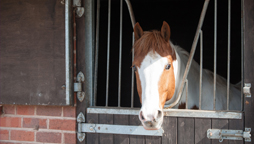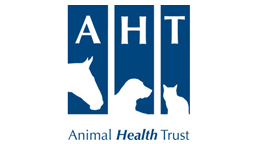Equine Influenza
Equine influenza, also known as 'flu', is an infectious disease which affects the upper respiratory tract of horses. There have been frequent outbreaks in the UK in recent years.
Clinical signs usually appear within 1–5 days of exposure to the flu virus and they can last for 3–6 weeks. Signs can include a high temperature, cough, nasal discharge, enlarged glands (under the lower jaw), conjunctivitis, depression, loss of appetite and filling of the lower limbs.
How is it spread?
Similar to human flu, equine flu is very contagious. It spreads rapidly, with the virus being released into the atmosphere as droplets by infected animals coughing. The virus can spread over longer distances than some other diseases, so any infected animal needs to be isolated by 100m to reduce the risk of airborne spread.
The flu virus can also live on surfaces, objects and peoples’ clothing that have been contaminated by these droplets. Using disinfectants, keeping separate sets of equipment and changing clothing between yards can help to manage the risk of spread in this way.
Vaccination
Vaccination is crucial in the fight against flu, and the disease is often introduced on to a premises by a non-vaccinated horse. Horses should be vaccinated annually, although competition horses are vaccinated more frequently. If over 70% of the country’s horses were vaccinated, flu would not be able to get a foothold because of a process called “herd immunity”, which is why it is very important that all horses are vaccinated, whether or not they go anywhere. Your vet will be able to provide guidance, but vaccines are effective, despite what you may hear to the contrary.
At the moment, only around 40% of the UK’s horse are vaccinated – are you included in this number? If not, your horse could be contributing to the spread of this disease and you could be putting his or her health at risk.
Prevention
Maintaining good hygiene and biosecurity on your yard can help to prevent the spread of equine flu. This includes:
- Vaccination
- Taking your horse’s temperature regularly so that you can tell when it is higher than normal
- Isolating all new horses
- Disinfecting vehicles and ensuring horses do not share haynets, feed bowls and other equipment
Having a yard health plan for everyone to follow will reduce the risk of equine flu and other infectious diseases being introduced to the premises, and good hygiene can minimise the risk of infections being spread between horses.
What do I do if I think we have flu in our yard?
Call your vet immediately to reduce the risk of further spread. A special Equine Influenza Surveillance Programme at the Animal Health Trust (AHT) provides a laboratory testing service to all vets, allowing them to send in swabs taken from horses with suspected flu and confirm not only if flu is present, but also which strain is responsible. You must follow the advice of your vet to minimise the risks associated with this virus.
More information
You can find more information about equine flu by downloading the document below.


